
Dehiwala Zoo visiting hours extended
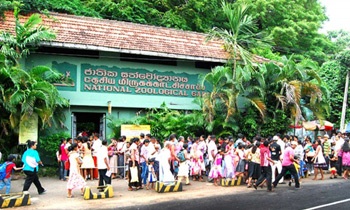
In a bid to ensure visitors have more time to spend at the Dehiwala Zoo, a decision was taken to extend its visiting hours.
Accordingly, the zoo will be open for the public from 7.00 a.m. to 10.00 p.m. from the month of September, Wildlife Minister Gamini Jayawickrama Perera said recently.
The minister said additional attractions would be established at the premises.
However, the Daily Mirror was unable to obtain further details about the changes at the zoo.
Source – DailyMirror, see more at – http://mirrorcitizen.dailymirror.lk/2017/07/04/dehiwala-zoo-visiting-hours-extended/
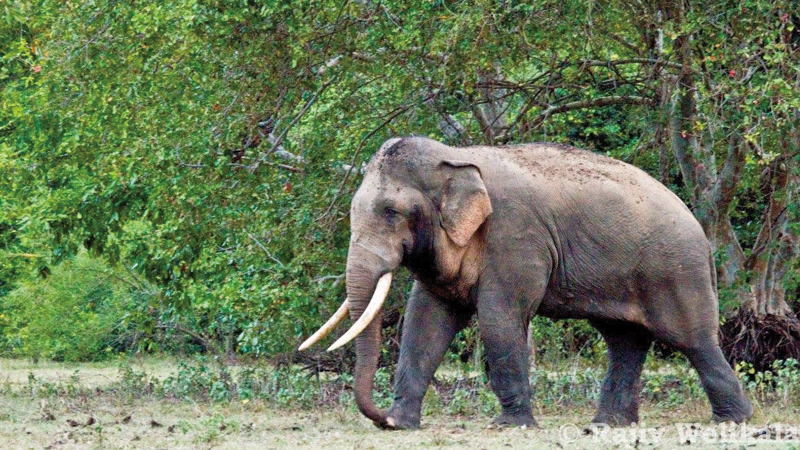
Renewed calls for GPS tracking collars for endangered tuskers
Environmentalists have renewed their call for GPS tracking collars to protect the endangered elephant population in the country with the wild the number of jumbo deaths on the rise.
The latest call comes in the wake of Deega Danthu, the famous tusker being injured and found lying by the bank of Kala Wewa after several days.
Highlighting the importance for a proper monitoring system to protect these tuskers, environmentalist Supun Jayaweera says the Department of Wildlife, which is the legally authorised guardian of these animals, should take necessary steps to introduce GPS tracking collars to these animals.
The Tusker of Kala Wewa, a rarest of the 1% tusker community in Sri Lanka injured due to human activity was found yesterday (08) near Kala Wewa.
The Department of Wildlife is providing the tusker with the necessary medical treatment and Jayaweera said hopefully,the tusker will survive his injuries.
According to Jayaweera, the tusker is suffering from an injury sustained by a gun shot to one of its front legs, above the ankle.
“The injury seems to have been caused by a trap gun,” he said.
“There is no life threatening situation for Deega Danthu at present. Even though the injury seem less serious, when tuskers like these fall it is not easy to get them back on their feet. Deega Danthu is unable to carry his weight with the injured leg at the moment,” Jayaweera explained.
As Deega Danthu lie fighting for life, Jayaweera points out that lack of proper monitoring of these tuskers has put their lives at stake. He observes that Mahasen, an equally rare tusker who roams the banks of the Minneriya reservoir and the sacred grounds of Somawathiya has suffered from numerous gunshot injuries. “The continuation of the line of tuskers in Sri Lanka depends on these tuskers.Therefore,their security is something that should be taken very seriously,” Jayaweera said.
“Deega Danthu was found after several days after it was initially injured. Unless someone reports that a tusker is injured or if the Wildlife officers look for a tusker noticing its absence, there is no method to find out if a tusker is in danger or not,” Jayaweera further said.
Jayaweera also said the umbrella protection provided to national parks is insufficient forthese tuskers who have a behavior pattern of migrating from one wilderness to another continuously.
Environmentalist Shashikalana Ratwatte speaking to the Daily News says wildlife conservation policies regarding these tuskers and wildlife at large must undergo drastic changes.
Ratwatte described the present wildlife conservation policy adopted by the Wildlife Department to be “out dated” and emphasised the importance of upgrading it up to that of international standards like in African countries.
“These countries use sophisticated high tech programmes to protect tuskers and other endangered animals. These programmes consist of extensive procedures from locating a wounded animal to relocating it after treatment. Sri Lanka too should adopt an similar methods,” Ratwatte explained.
Ratwatte also points out that the unavailability of correct data on tuskers and elephants in Sri Lanka is yet another serious limitation.
“According to the data collected by the last official survey conducted in 2012, there were 6,000 elephants in Sri Lanka. I personally do not agree with this data. There is only a 14% forest area of Sri Lanka’s land area. It is impossible for 6,000 elephants to live in such a area,” Ratwatte said.
Ratwatte also said according to authorities, there are 240 tuskers in Sri Lanka whereas according to their sources, there are only 120 tuskers roaming the wilderness of Sri Lanka.
Ratwatte further said measures should be taken to connect all national parks creating a safe route for migrating tuskers and stop human activities near traditional ‘Alimankada’.
He also highlighted the importance of ensuring environment eutrophication in forests in Sri Lanka.
Meanwhile, Sustainability and Wildlife Ministry Secretary R.M.D.B. Meegasmulla says the Department of Wildlife has already begun to reintroduce GPS tracking collars for tuskers. He said that such tracking collars were used sometimes back by the Wildlife Department. “There were some allegations that a tusker died due to a tracking collar which temporarily halted its use,” Meegasmulla explained.
Meegasmulla further said they are also to establish an elephant holding ground in Lunugamwehera, one similar to that in Horowpatana. He also said the Wildlife Department is all set to conduct a survey of elephants on coming September, 2017.
http://www.dailynews.lk/2017/07/10/local/121442/renewed-calls-gps-tracking-collars-endangered-tuskers
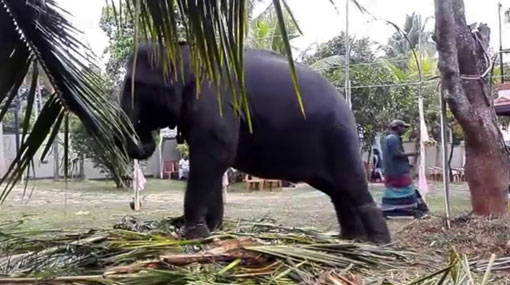
Owners of poached elephants may escape punishment – report

A group of wealthy businessmen, a Buddhist priest and other social higher-ups on trial in Sri Lanka for allegedly keeping illegally captured elephants may get their animals back — legally.
Sri Lanka’s government says it is ready to forgive the owners of poached elephants and give them a chance to apply for license provided they can prove in court that they did not know the animals that were confiscated from them had been illegally captured from the wild.
In the South Asian island nation, an elephant in the backyard has long been a sign of wealth, privilege and power. Though capturing wild elephants has been banned for decades and registration records indicate there should be only 127 elephants in captivity— most of them older — young elephants are a common sight in the country’s 400 or so Buddhist religious processions and traditional ceremonies every year.
In the last two years, the government has confiscated 39 elephants whose owners produced either false permits or none at all. Some had paid as much as $200,000 per captured animal when a previous government was in office, according to the Wildlife Ministry. It would suggest the authorities had either turned a blind eye to the racket or sold fake licenses.
The current trial Involves 42 people — four of them accused of illegally capturing and trading in wild elephants, 27 who allegedly altered the official elephant registry and issued and obtained false documents, five suspected of possessing elephants without licenses and six held for possessing licenses without actually having an elephant in their backyard.
Among them are a prominent Buddhist priest and a judge. If convicted, they could face a maximum 10 years in prison or a fine or both.
But if the government has its way, some of them could walk free and own an elephant legally.
A measure adopted by the Cabinet in April says only poachers and wildlife officers who collude with them by providing forged licenses will face punishment.
According to Wildlife Minister Gamini Jayawickrama Perera, owners may get a second chance if they are able to prove that they did not know their elephants were illegally captured or the paperwork fraudulent.
“There are some people who love the animals and maybe they have taken them without knowing. If there are genuine cases proved in court then the court can decide and tell us,” Perera said.It wasn’t clear when the court will rule or if it will take the government’s view into account. But the suggestion has irked conservationists who say it sets a bad precedent..”
“This is nonsense,” said Sumith Pilapitiya a former World Bank environmental specialist. “The onus is on the buyer to make sure the paperwork is right.”
“You are trying to legalize something illegal, looking for loopholes,” he said.
The reason for the government’s unexpected leniency toward owners of poached elephants lies in Sri Lanka’s traditions. It wasn’t a problem decades and centuries ago when elephants were plentiful, but the population has since been decimated.
Perera said it’s difficult for the government to feed and care for elephants confiscated from homes and temples. There is also a shortage of elephants in religious processions, most of which take place around the same time this month.
Perera said the government’s measure was not meant to give an escape route to the offenders.
“We can’t give guarantees to anyone, illegal is illegal,” he said, adding that prospective owners could re-apply for an elephant license “according to the judgment given by the court.
Source- 08/07/2017,adaderana, See more at – http://www.adaderana.lk/news/41800/owners-of-poached-elephants-may-escape-punishment-report
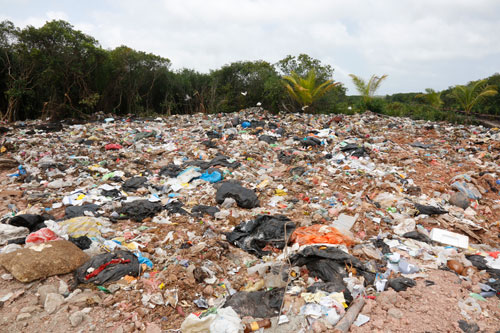
Dumping garbage on Muthurajawela wetlands adversely impacts environment
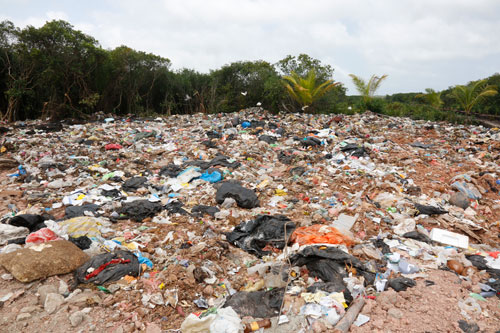
Dumping hundreds of tons of garbage in Dalatura and Nugape areas in the Muthurajawela wetlands is already having its environmental impact, residents warned.
The residents told the Sunday Times they are concerned about health risks, floods and the threat of dengue as the garbage site is left uncovered with unsegregated garbage covering the marshland.
President of the Organisation for Protecting Muthurajawela Sanctuary, Anil Lankapura Jayamaha said that private owners who claim they own the land, support and allow Govt to fill the land with garbage, to clear reserve areas which extend over 200 acres.
He explained that dengue cases have been increasing in Muthurajawela after the dumping of garbage took place. He said that people in the area are unable to open the doors of their houses due to the stench, mosquitoes and swarms of flies. “People are concerned of their health and therefore, they engage in protests, but the groups supporting the private owner have been settled at the entrance of the dump site, and they enter into confrontations with the villagers,” Mr Jayamaha said.
Area residents said around 17 houses have developed cracks after hundreds of trucks arrived in the area where the dump site is located. An affected resident, Nirajan Priyasad said his house developed cracks after trucks filled with tons of garbage, proceeded one after another to Dalatura. “We villagers refused, yet the police provided them security. The smelly garbage was taken in front of our houses and we could not do anything about it”, he said.
“This happened suddenly, the dumping started from last week. We were not informed,” he said. Another resident, Asanka Sovis, who works as a labourer in a private company, said his house walls also showed signs of cracking. He said the water in the area is contaminated and smelly, while they are forced to live with the stench. “I can’t even have a walk outside now, I have been forced indoors,” he said . A visit by a Sunday Times team to Dalatura garbage site showed that a thin layer of soil had been laid over the garbage while some of the areas had plastic bags, rubble organic material, while in some areas garbage had been set on fire.
Central Environmental Authority officials who visited the area told residents the dumping of garbage at the Dalathura site was unacceptable and damaging to the environment.
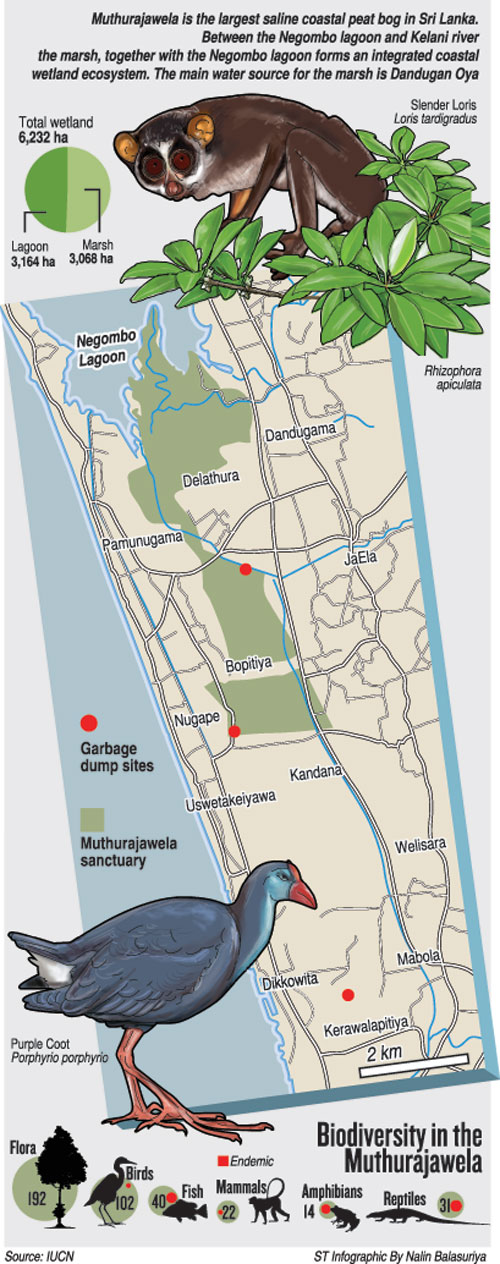
Source – 09/07/2017, The Sunday Times, See more at – http://www.sundaytimes.lk/170709/news/dumping-garbage-on-muthurajawela-wetlands-adversely-impacts-environment-249315.html

Plastic polluter: Sri Lanka victim of wrong data by World Bank
The information that Sri Lanka’s per capita waste generation rate is 5.1kg per day is an un-sourced, unverifiable statistic first published in the 2012 What a Waste (WaW) report
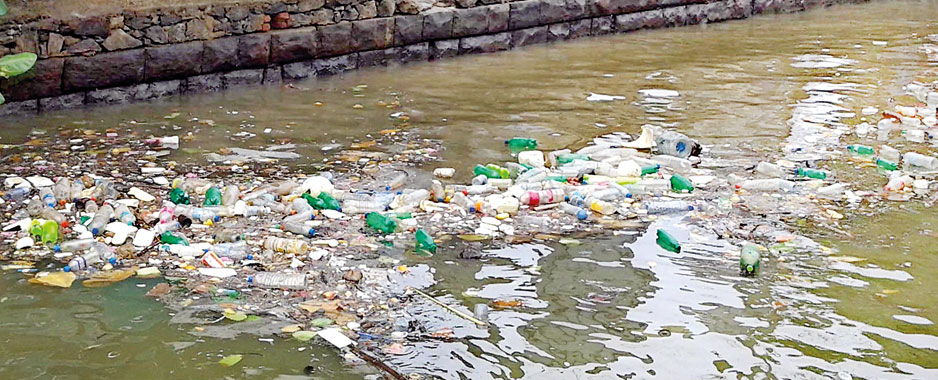
Widely published information that Sri Lanka is the fifth largest polluter of seas is based on an erroneous statistic first released in a World Bank study which was then used by researchers to compile a list of worst offender countries, the Sunday Times found.
Domestic and international media continue to report that Sri Lanka falls only behind China, Indonesia, the Philippines and Vietnam in how much plastics it dumps into the sea. This is drawn from a February 2015 article in the peer-reviewed Science Magazine which states, among other things, that Sri Lanka generates 5.1kg of waste per person, per day; that 1.59 million metric tons of this is mismanaged plastic waste; and that it dumps between 0.24 and 0.64 million metric tons of plastic into the sea each year.
But the information that Sri Lanka’s per capita waste generation rate is 5.1kg per day is an un-sourced, unverifiable statistic first published in the 2012 What a Waste (WaW) report of the World Bank. There is no reference for this calculation; nor is it divulged how it was arrived at.
The World Bank has now confirmed that there was an error in the waste generation number. It was identified only because the Sunday Times called for verification. A spokesperson also said: “As you know, this is a report that came out in 2012 and it is currently in the process of getting reviewed and updated. We will be able to provide you with updated data as soon as the report is available.”
In collecting data for the South Asia region for 2017 WaW, the Bank will use the Comprehensive Integrated Solid Waste Management Plan for Targeted Provinces in Sri Lanka by UNHABITAT and the Data Collection Survey on Solid Waste Management in the Democratic Socialist Republic of Sri Lanka by Japan International Cooperation Agency (JICA). The reports are still being reviewed but per capita generation rates roughly range between 0.46kg and 0.52kg.
The 2016 WaW has depended on two sources for Sri Lanka data. One is a 2009 report from the United Nations Statistics Division which captured waste generation figures from Dehiwala-Mt Lavinia and Moratuwa. The former is 0.73 kg per person, per day and the latter is 0.67 kg per person, per day. There is no national level information cited.
The other is An Overview of the Issue of Solid Waste Management in Sri Lanka authored by K. L. S. Perera for the 2003 Third International Conference on Environment and Health. The Sunday Times accessed it online and also interviewed Mr. Perera, a retired Senior Lecturer at the Siyane National College of Education in Veyangoda. His paper states that Colombo faces a “severe crisis with respect to the disposal of around 1,500 tons of solid waste material per day” but makes no reference to 5.1kg per person, per day.
These shortcomings in WaW went unnoticed. But in 2015, a seven-member research team released an article in the academic journal ‘Science Magazine’ listing Sri Lanka as one of the worst polluters of seas based on WaW data. Headed by Jenna Jambeck, Associate Professor in the College of Engineering at the University of Georgia, the group also estimated the percentage of waste inadequately managed by each country using a “logistic regression model”. Sri Lanka fared miserably.
The Sunday Times contacted Dr. Jambeck, who is a committed environmentalist, as far back as 2015. She said, while the data taken from the World Bank and Sri Lanka estimates had also seemed high to her team, they could not cherry-pick countries to correct. She recommended that localised data from the respective countries be examined to see if waste generation estimates could be refined.
When we reconnected with Dr. Jambeck this year – as Sri Lanka’s worldwide ranking was being publicised again owing to the collapse of the Meethotamulla garbage dump and related issues – she pointed out that the goal of their work had been to create a global number. “We state that in-country data should be confirmed by on-the-ground data and research,” she explained.
Dr. Jambeck said, as she did at a press conference in 2015, that the paper is not about pointing fingers. “The data was provided to be transparent so that exactly what you are doing is possible,” she explained.
“We want people to look at the data and refine it over time. We used the best available data at the time.”
But the team also created a list. This is what most media – including local journalists – pounced on; and how Sri Lanka suddenly gained global notoriety based on a statistic nobody can still account for. The list, Dr. Jambeck said, was a means of looking at “influencing factors”. As lead author, she did not single out any country (except USA, where she is from) for discussion. Journalists decided to do that.
“It is a snapshot in time,” she continued, about the list. “Ten years ago, it would be different, and ten years into the future, it would be different.’ The researchers found that middle income countries with rapidly developing economies, large coastal populations and coastline, and where infrastructure has lagged behind this development, had larger issues with waste.
Sri Lanka fits the bill. Even ten years ago, however, waste generation figures were not as high as cited in the 2016 WaW. The Central Environmental Authority does not have a centralised repository of historic data, said J. M. U. Indrarathne, Deputy Director General (Waste Management).
But the 2003 JICA Study on Improvement of Solid Waste Management in Secondary Cities in Sri Lanka found average waste generation rates in seven study towns to be 0.98kg per person, per day (from 0.88kg in Matale to 1.18kg in Kandy). That the CEA lacks its own data in a country floundering about in waste generation and disposal issues is a matter of discussion.
In the end, however, lists and rankings are immaterial. Sri Lanka has a serious problem with waste generation and disposal. The status quo has not improved for decades. Whether it is fifth or 50th in the global rankings, this country is a serial polluter and successive governments have done nothing to mitigate this.
| Waste management study: SL repeatedly failed to fix issues A 15-year-old Japanese-funded study into waste management exposes how Sri Lanka has repeatedly failed to fix longstanding issues despite expert suggestions for improvement.Environmentalists warn that world rankings – wherever the country may stand in them – are purely academic. “The fact stands that our seas and land are badly polluted and increasingly so,” said one campaigner, who did not wish to be named. “And our Government is doing precious little, if at all, to mitigate it. I do not care where we rank. Being anywhere on the polluter list is equally bad. The message or objective of that ranking is to shock people into realising we have to change.”The 2003 JICA Study on Improvement of Solid Waste Management in Secondary Cities in Sri Lanka identified eight leading problems. These are just as current today as they were then. They comprise widespread scattering of waste in towns; the terrible condition of landfill sites; and huge solid waste management expenditure (20 to 30 percent of the budget of local authorities). There is difficulty controlling the many waste collection workers; and a high absentee and turnover rate, ranging from 10-20 percent.As early as 15 years ago, the study also pointed to little remaining capacity of existing landfill sites. There were many complaints from citizens, it said, but there was also lack of public cooperation. There was also no plan for the future. “Most of these are not technical issues but institutional ones,” the study warned. “Technology alone cannot solve these problems.”“Good governance is the key,” it stressed. Improvement could be made through institutional and managerial capacity, “without spending much money”. The report also stated plainly that there were two main problems faced by local authorities. One was the rapid increase of waste, which meant they had to collect more and more. Another was that the standard environmental requirements for landfills were becoming stricter. “Therefore, you cannot simply dump waste anymore,” it warned. “You have to improve landfill operation to reduce the environmental impact.” Experts identified insufficient understanding of solid waste management. The sections in charge of solid waste management in local authorities were considered low in status. Organisation was weak owing to poor cost control and planning. There were no future plans. Most authorities dealt with issues using their own staff and equipment without considering citizen involvement. The 2016 JICA Data Collection Survey on Solid Waste Management in Socialist Democratic Republic of Sri Lanka observes that generation in Sri Lanka has increased from around 6,400 tons per day in 1999 (UNEP, 2001) to 10,786 tons per day since 2009 (University of Moratuwa and NSWMSC, 2013). The reason for this is economic growth after the end of the civil war. Waste generation will keep going up. It will not matter what list Sri Lanka is, or isn’t, on. Experts agree that solutions – many of which have already been offered through research and study – have to be implemented, now. |
Source – 09/07/2017, The Sunday Times, See more at – http://www.sundaytimes.lk/170709/news/plastic-polluter-sri-lanka-victim-of-misinformation-by-world-bank-249195.html

Snakebites cost Lankan government more than $10 million annually : Study

Every year, snakebites cost the Sri Lankan government more than 10 million USD, and lead to economic loss of nearly 4 million USD for individuals, according to a new study in PLOS Neglected Tropical Diseases.
The study was picked up by Medical Xpress and claimed victims of snakebites in poor rural communities in Asia, Africa, and Latin America are often young individuals who are earning a wage and have a considerable remaining life expectancy. Moreover, they often work in farming or other labor intensive jobs that they must take time off from in order to recover from a bite.
David Lalloo, of the Liverpool School of Tropical Medicine, UK, and colleagues from the University of Kelaniya used data from a nation-wide household survey conducted in Sri Lanka in 2013 and 2013 to estimate the number of snake bites and deaths from snake bites annually. To estimate the costs of the bites, they used additional household questionnaires and information gathered from hospital cost accounting systems, the report claimed.
79% of victims, the study found, suffered economic loss after a snake bite, with a median out of pocket cost of $11.82 and a median loss of income of $28.57 for those employed and $33.21 for those self-employed. To put this in context, the mean per capita income per month for people living in the rural areas studied was only $74 USD. The total annual economic burden on households was $3.8 USD. In addition, each year, the bites cost the national healthcare system $10.3 million USD—which is 0.7% of the country’s total healthcare costs—and lead to more than 11,000 years’ worth of disability time, the researchers calculated. The numbers were comparable to Sri Lanka’s annual spending on meningitis and dengue.
“It is unlikely that these costs will reduce in the near future as there is no indication that the high incidence of bites is declining,” the researchers say. “Even more concerning is the economic burden that snakebite places on victims and their households… It is highly likely in Sri Lanka that snakebite drives the same catastrophic costs for the poor as many other diseases.”
Source – 07/07/2017, Times Online, See more at – http://www.sundaytimes.lk/article/1027300/snakebites-cost-lankan-government-more-than-10-million-annually-report




